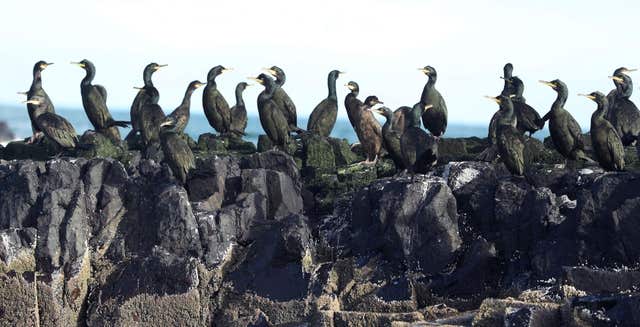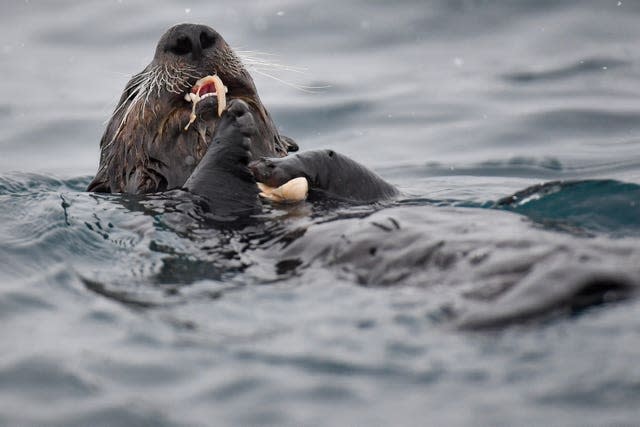‘Concerning’ levels of forever chemicals found in UK fish
Testing of “forever chemicals” in England’s wild fish has found high levels of an industrial pollutant that if eaten more than twice a year would exceed recommended EU safety guidelines.
Per and polyfluoroalkyl substances (PFAS) are a class of nearly 10,000 chemicals that are used in many household goods such as non-stick cookware, waterproof fabrics, personal care products and stain-proof coatings on carpets.
Two particular types, PFOS and PFOA, build up in humans and have been linked to health problems including cancer, liver damage, decreased fertility and increased risk of asthma and thyroid disease.
Data obtained by Watershed Investigations – a team of journalists investigating water issues, and shared with the PA news agency – shows contamination in flounder, dab and plaice throughout England’s river and coastal habitats, with the highest readings in the Thames, Mersey and Wyre.
One sample taken from flounder in the Thames at Woolwich showed it contained 52.1 micrograms per kilogram of PFAS.
An average adult weighing 75kg who ate a regular-sized portion (170g) of this fish more than once every five months would exceed the recommended safety allowance set by the European Food Safety Authority (EFSA).
There is currently no such set of guidelines in the UK, although a spokesperson for the Department for Environment, Food and Rural Affairs said: “PFAS chemicals are in the environment because they have been used widely in products and are extremely persistent.
“Since the 2000s, we have taken action to increase monitoring and support a ban or highly restrict specific PFAS both domestically and internationally.
“We continue to work with regulators to further understand the risks of PFAS and implement measures to address them.”
The EFSA assessment is based on four chemicals – PFOS, PFOA, PFNA and PFHxS – although the samples taken in wild fish by the Centre for Environment, Fisheries and Aquaculture Science (Cefas) recorded around 30 different types.
Dr David Megson, an environmental chemist at Manchester Metropolitan University, believes there are hundreds of different PFAS in the environment.
He said: “PFAS are a very wide group of chemicals and have a variety of different levels of persistence and toxicity.
“At the moment we don’t have enough information to confirm what is safe and what is posing a problem.
“From looking at most PFAS you would assume they are toxic and bioaccumulative. I would prefer us to follow the precautionary principle and only use them where they are proven to be safe and pose no risk to the environment.
“Instead it seems like we are assuming they are all safe for use and we have to wait decades before we confirm that they have significantly damaged our environment and human health.”

Once in the environment, PFAS are almost impossible to remove and some types are known to bioaccumulate through the food chain, with top predators like whales and sharks receiving the highest dosage.
Professor Ian Cousins, an environmental scientist at Stockholm University, said scientific research has focused more on human exposure to PFAS than on their effect on ecosystems.
He added: “But you should be concerned about consuming the fish and you wouldn’t want to catch the fish and eat it if you lived along the Thames on a regular basis based on what we know about human exposure.”
Not all PFAS are known to be toxic or bioaccumulative but all are persistent, which has led Prof Cousins to believe that achieving environmental quality standards in urban rivers such as the Thames is “not really possible”.
He said: “The problem is they’re still floating around in the environment and they will do for a long time because they’re so persistent, they don’t break down at all, which is why they are called a forever chemical.”

A study last year from Cardiff University on otters found PFAS in each one they sampled, with more than 80% of them containing 12 types of PFAS.
The researchers said wastewater treatment works or the use of sewage sludge in farming were likely sources.
Currently, the UK regulates only PFOA and PFOS, though there are proposals in the EU to regulate PFAS together as one class, which Prof Cousins described as “an idealistic, pragmatic and very sensible approach”.
Dr Janine Gray, head of science and policy at WildFish, said: “The significant concentrations of PFAS found in fish is very concerning but not surprising, and unfortunately just the tip of the chemical iceberg.
“Today, more than 350,000 regulated chemicals are in use. Our waters and their wildlife are exposed to a wide range of these, yet our rivers are currently only routinely checked for 45.
“We must ban all but the most vital uses of PFAS forever chemicals and policy must account for the additive/synergistic effects of chemical mixtures on aquatic life.”
